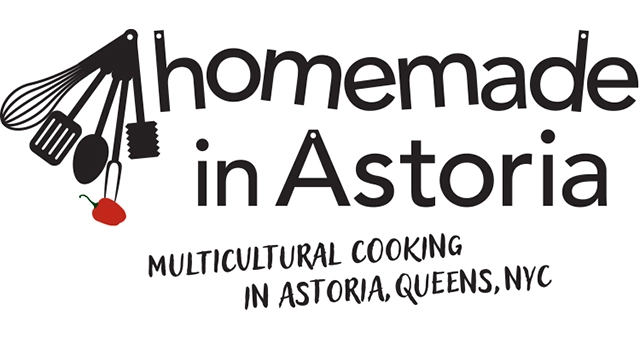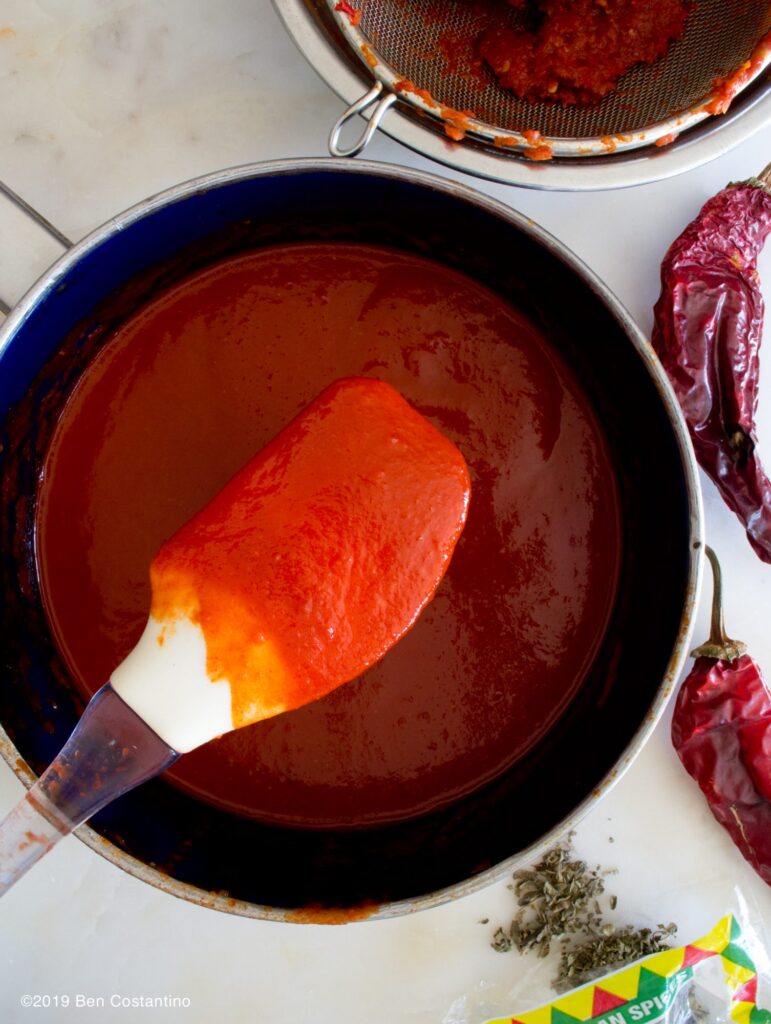
Making a really good red enchilada sauce is an extremely rewarding experience, and to be super honest … it can get rather messy. However, it’s the kind of “messy” classified as a bonding activity with your ingredients when you really LOVE cooking. You don’t just make enchilada sauce because you want to eat, you also do it because it’s fun.
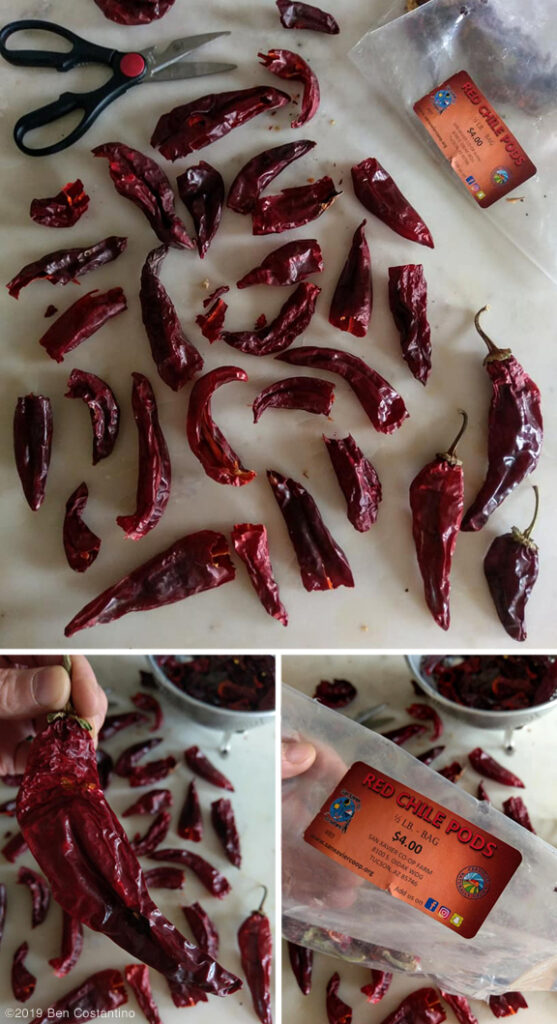
Red chile pods from the San Xavier Coop in Tucson, Arizona
Making the sauce
When you want enchiladas you typically want them immediately, and nothing about making enchilada sauce is quick and easy. Therefore, it helps to treat the sauce-making as a separate event. Sit back, relax, and make it a day ahead of time as a rainy day activity. Store it in the fridge overnight, and it also does really well in the freezer to use for far-future use. The basic steps are quite simple … soak the chiles, roast your vegetables, throw them into a blender or food processor, strain the hell out of it, then add your stock and seasoning and simmer it a little to thicken up.
My first attempts at red enchilada sauce were met with mediocre results because I put in mediocre effort with the lack of straining. To get a smooth, silky texture without seeds it REALLY requires some patience with a cheesecloth and/or fine mesh strainer. At the end, your kitchen can easily look like a horror movie murder scene if you’re not careful about constant cleanup. To avoid this, have a damp, bleached towel on hand to attend to any spills so your surfaces don’t get stained. You can also lay down some newspaper on your table or counter and work on that.
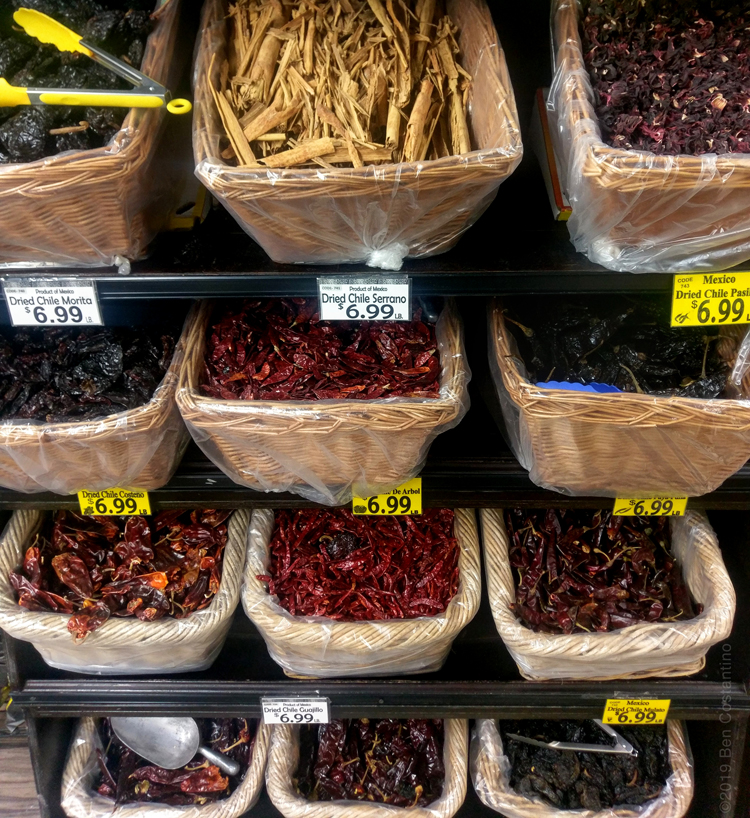
An assortment of dried chile peppers at Trade Fair market in Astoria, Queens, NYC.
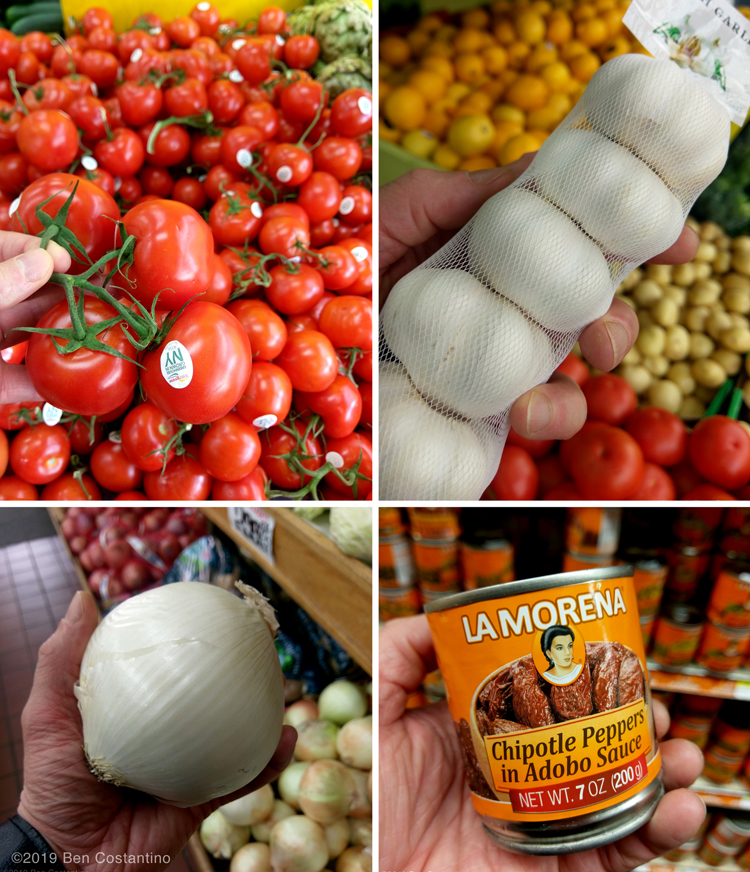
 Red Enchilada Sauce
Red Enchilada Sauce
![]()
Ingredients
- ½ pound dried red chile peppers
- 10 cloves garlic, peeled
- 2 white onions
- 4 medium sized vine tomatoes one
- 7-oz. can of chipotle peppers in Adobo sauce
- 2 tablespoons of Mexican oregano
- 1 teaspoon of cumin
- 1 ½ cups of chicken or vegetable stock
- 1 tablespoon of apple cider vinegar
- 1 teaspoon of white sugar kosher salt to taste
![]()
Instructions
- Cut the stems off your chiles and shake out all of the seeds. If needed, you can make in incision lengthwise and open them like a drawer to also cut out the ribs and release any remaining seeds. If you want a spicy sauce, keep some seeds. If you want a mild sauce, simply don’t use the seeds.
- Place your dried chiles in a large pot and fill just enough to cover with water. Bring this to a brief boil, then turn the heat off. Let the chilis remain in the hot water for about an hour to fully hydrate.
- Preheat your oven to 400 degrees. Meanwhile, peel and cut the onion into halves or quarters, core the tomato and keep it whole. On a roasting pan, spread the garlic tomatoes, onions and garlic in one layer on a roasting pan. Coat everything with olive oil and sprinkle with a dusting of little kosher salt. Roast these for about 20 to 30 minutes until the onion starts to brown. Remove from heat and set aside.
- Transfer into a food processor the hydrated chile peppers, roasted vegetables, and the chipotle peppers in Adobo sauce. Blend until everything is broken down into a chunky salsa-like consistency.
- Using a cheesecloth or mesh strainer, you need to extract as much liquid from this mixture as possible. Techniques for doing this may vary from kitchen to kitchen. Pour the blended mixture into a mesh strainer (suspended over a medium saucepan) in batches about 2 cups at a time. I suggest using a sturdy ladle to press out the liquid. No need to press hard, just keep a constant up and down motion to keep everything moving and you will soon be left with nothing but pulp.
- Once all batches have been extracted, transfer the saucepan to the stovetop. Add chicken or vegetable stock, Mexican oregano, cumin, sugar, apple cider vinegar and kosher salt to taste. Simmer this for about an hour, stirring frequently. This will thicken and cook down into an amazing sauce, and you’re done!
Yield: About 4 cups of enchilada sauce. If you like your enchiladas completely swimming in sauce then by all means double the recipe. I like mine to be moderately saucy and I found this recipe to be sufficient. The amounts I use are what one standard food processor will allow.
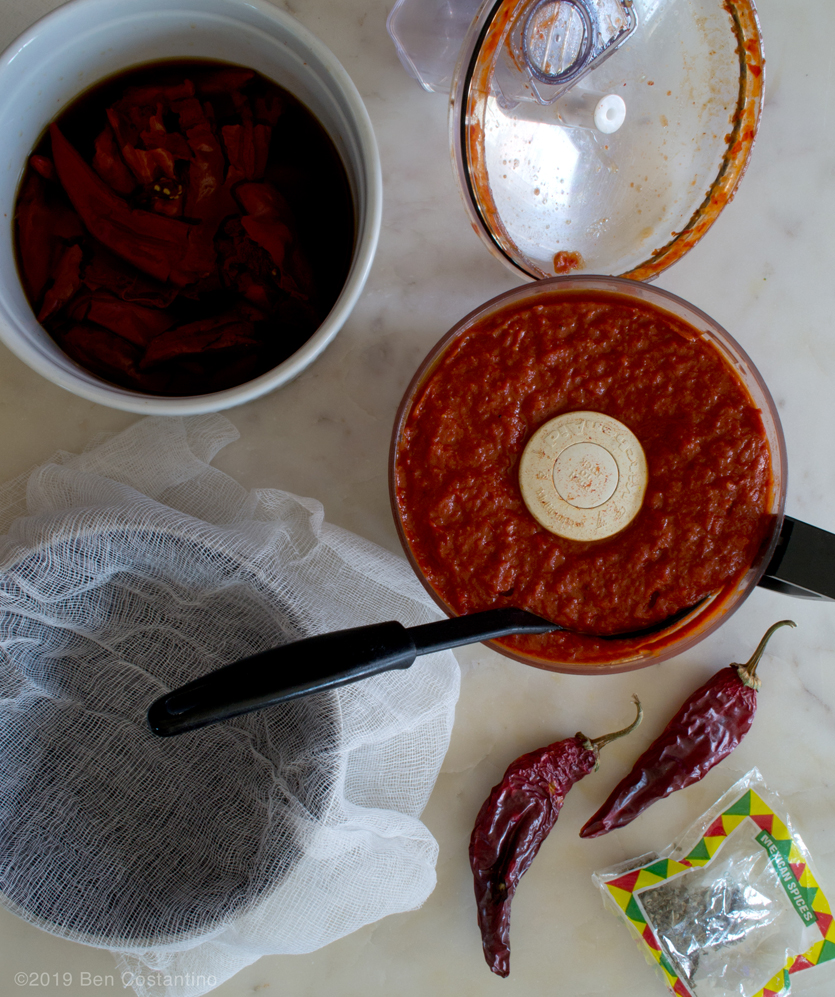
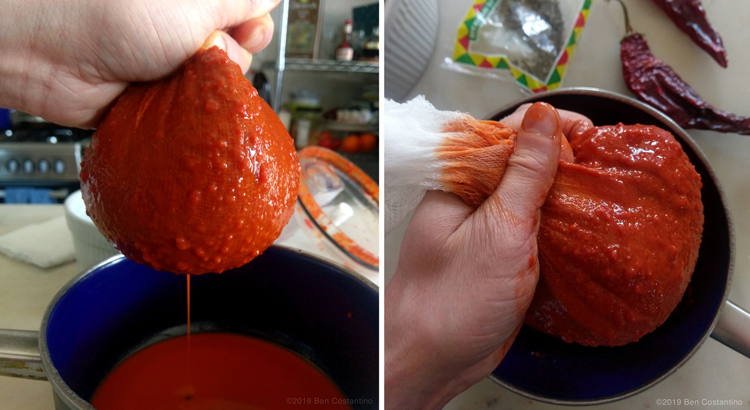
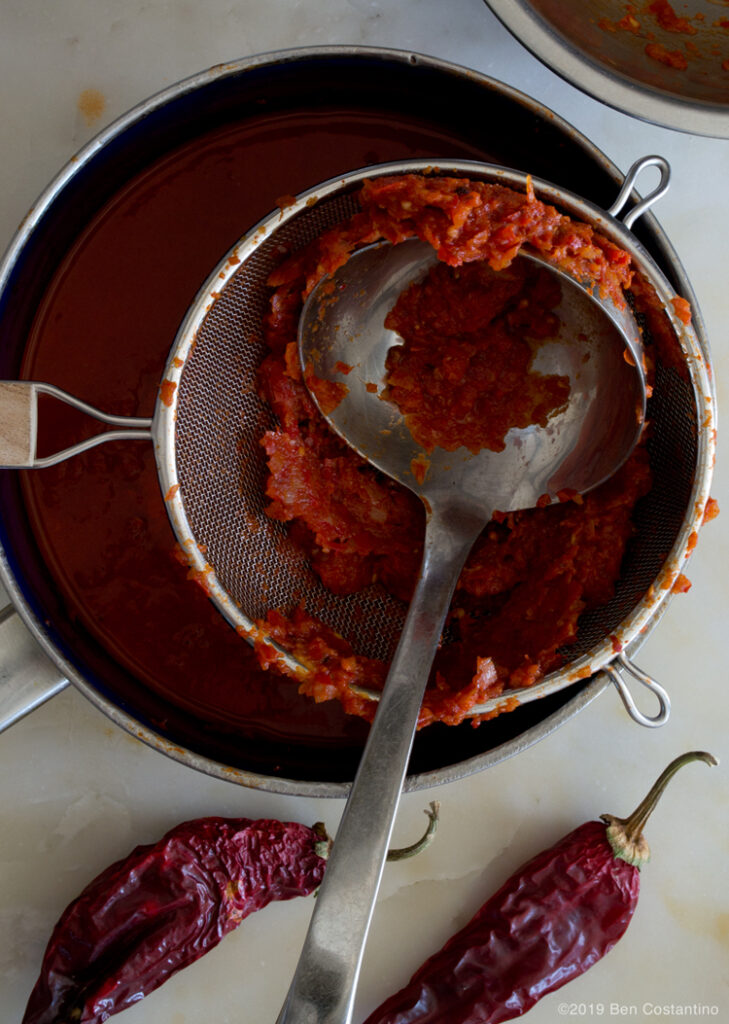
More about red chile peppers
Let’s talk chile peppers. I actually couldn’t tell what type of chiles my mom sent me, because as you could see in the photo … the bag just said “red chiles”. When you shop for dried peppers you might be overwhelmed by all the choices. The shopping process should be fun, not stressful. So I’m here to break things down and navigate a decision.
The aroma in the dried red chile section is one that gets all up in your sinuses. Advice is good to have, but it’s also important to trust your own senses as well. Just like wine tasting, you have to try them out. So, start exploring. Bring of each variety up to your nose and inhale to get to know them on an intimate level. Some are spicy and light, others are rich with a savory chocolate-like character, and some are difficult to describe. To make a red enchilada sauce, it’s good to have balance.
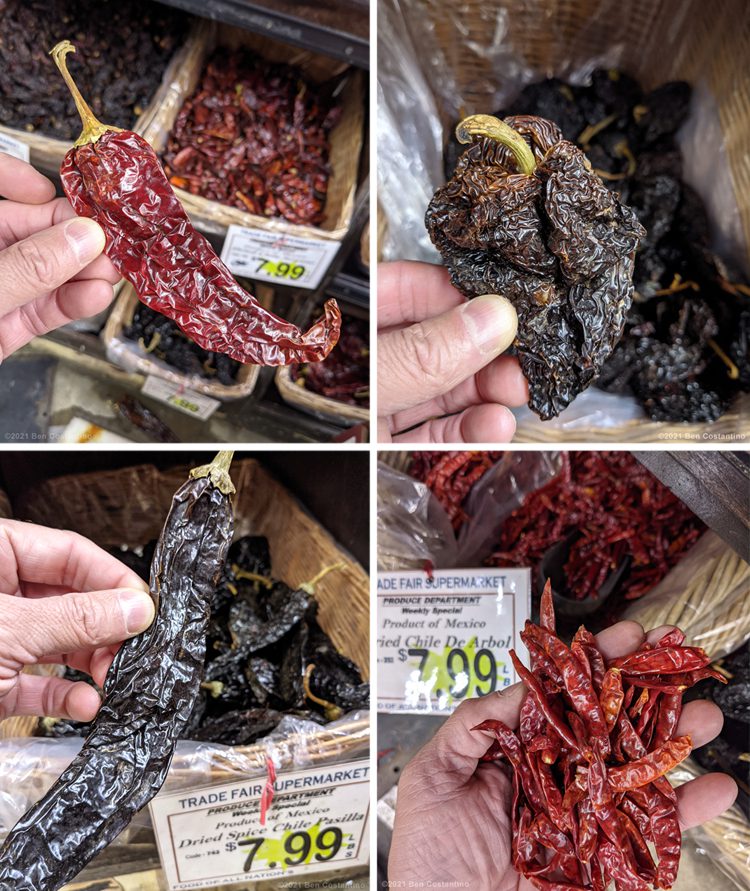
These are some super common dried chile peppers used in red enchilada sauce. Clockwise from upper left… Guajillo, Ancho, Árbol, and Pasilla peppers.
Ancho peppers are actually dried, young poblano peppers that are dark in color and mild in flavor, remnant of savory chocolate. Guajillos are earthy and medium-hot in heat. Árbol chiles are tiny but REALLY hot. They’re what you should buy if you really like spicy food, but use only a few in a sauce. Pasilla peppers have a rich, full-bodied, almost-smoky flavor similar to that of the ever-so-popular Chipotle pepper and probably my favorite. The popular TV personality, Chef Rick Bayless turned me on to Pasilla peppers from watching his video on Oaxacan Pasilla Salsa, so definitely check that out.
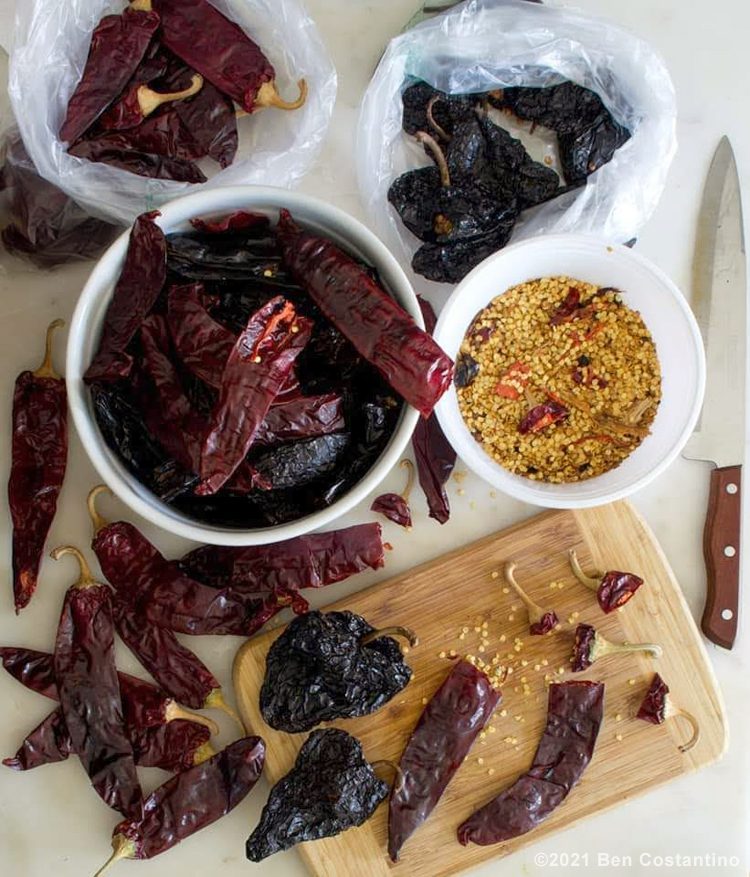
Here is the process of seeding the peppers. This time I was using Guajillo and Ancho peppers. It was not a spicy sauce, needless to say.
